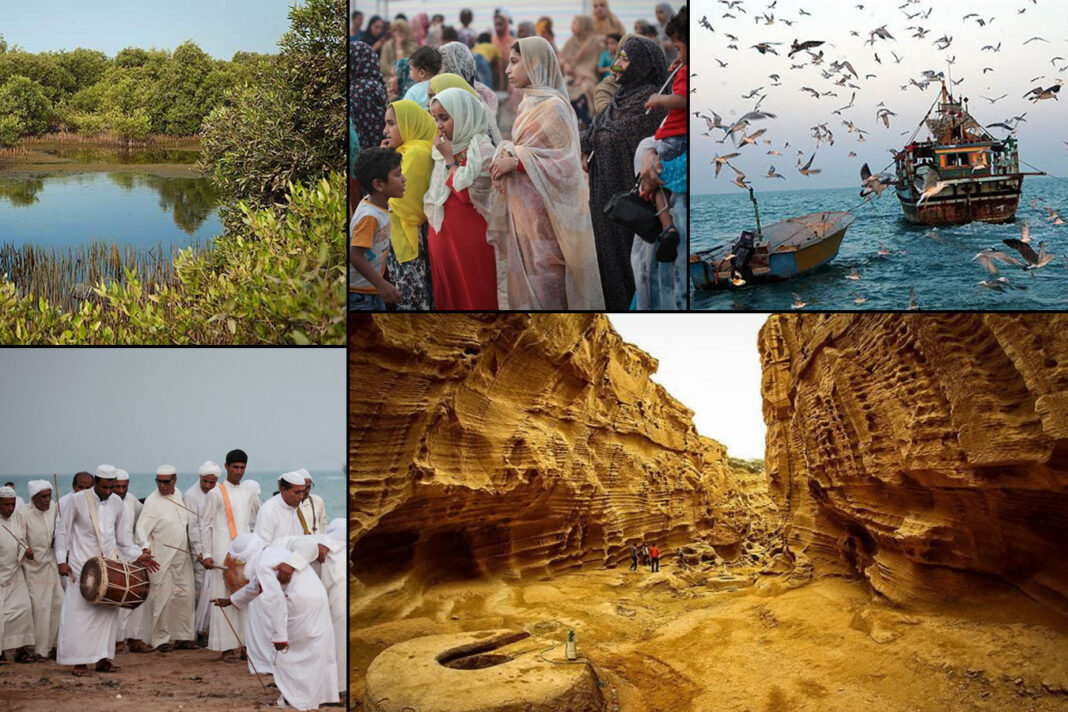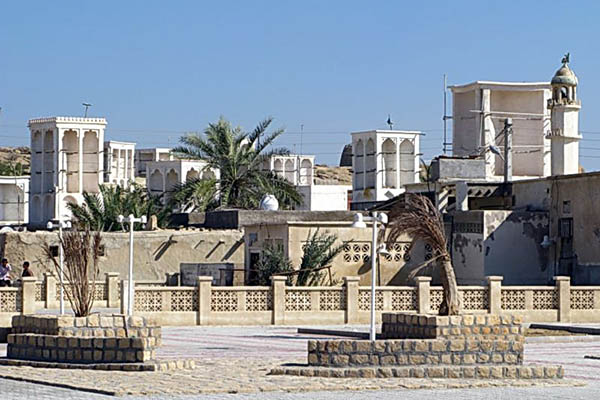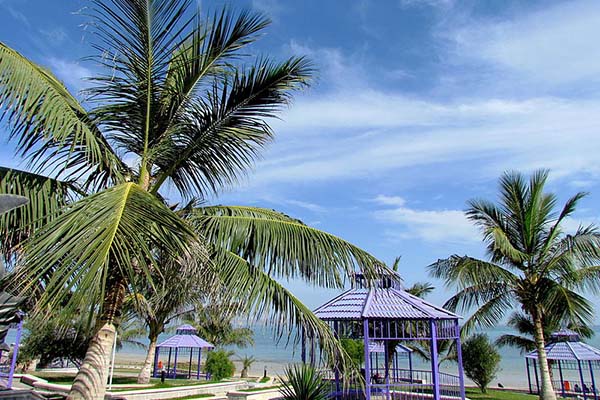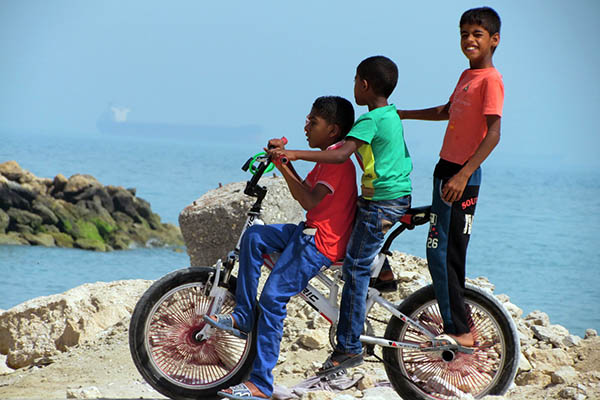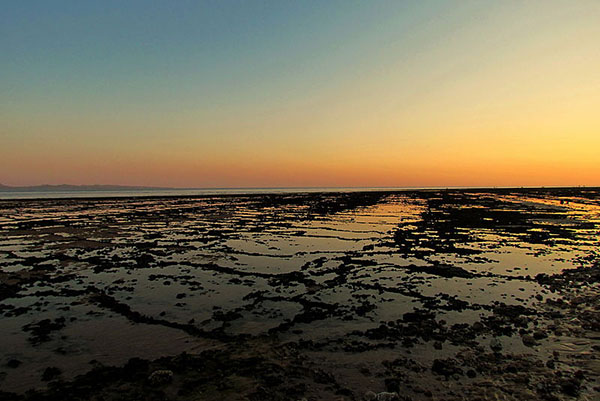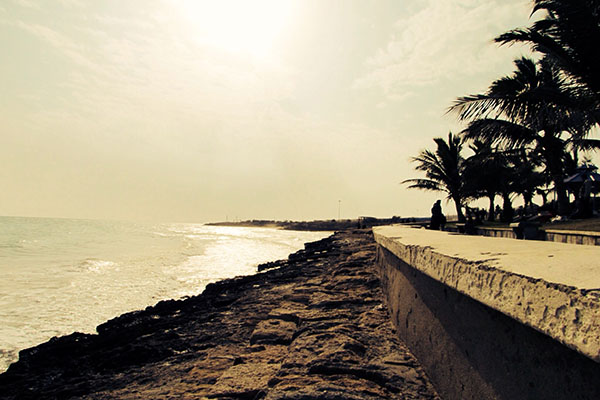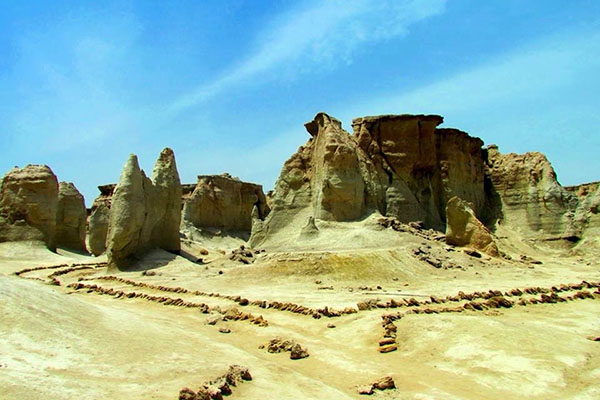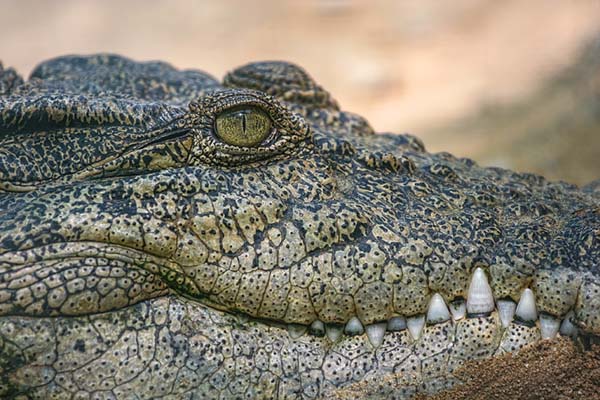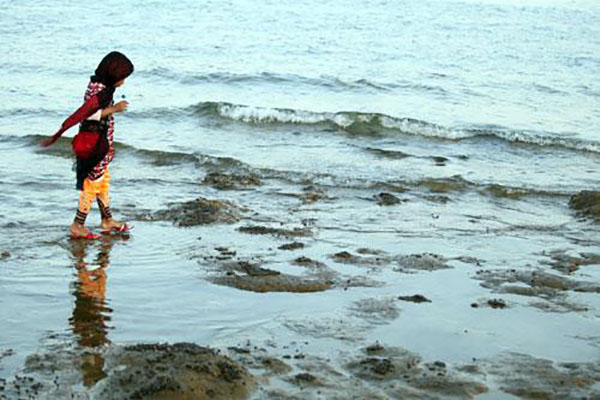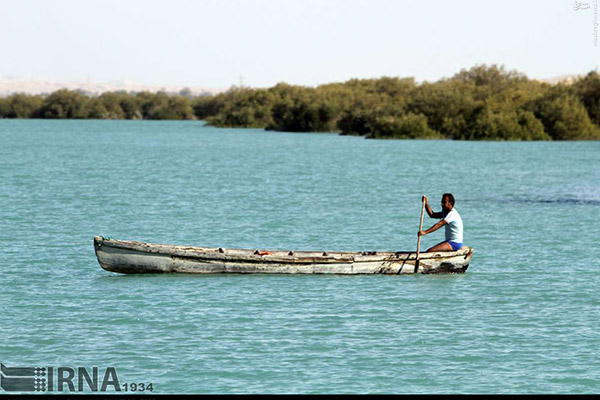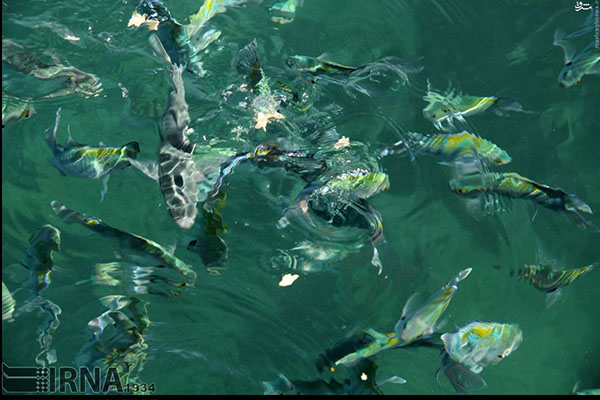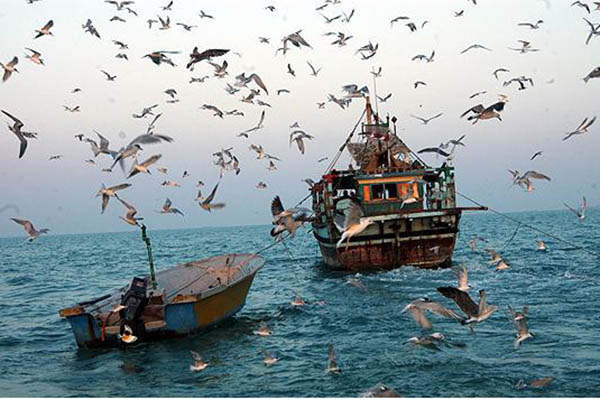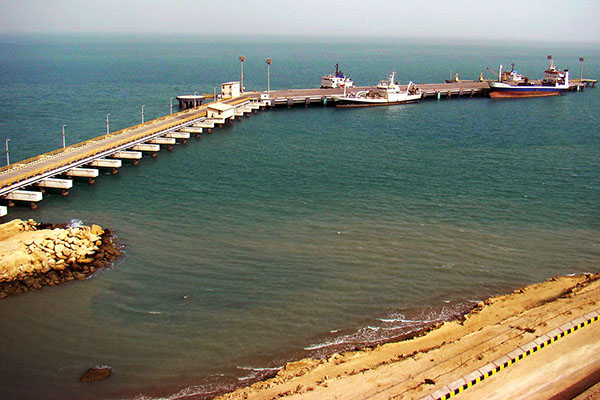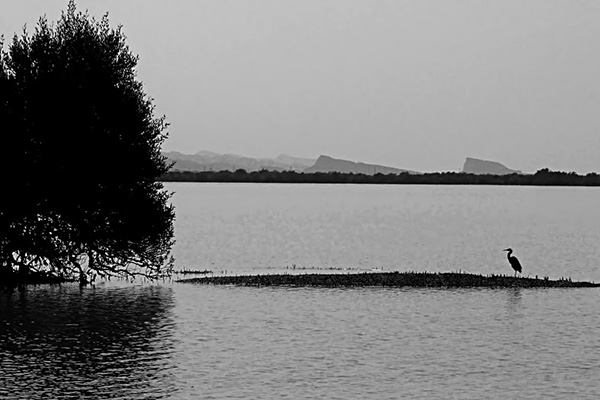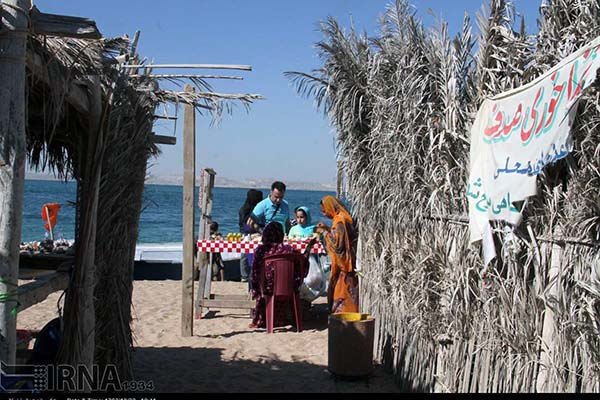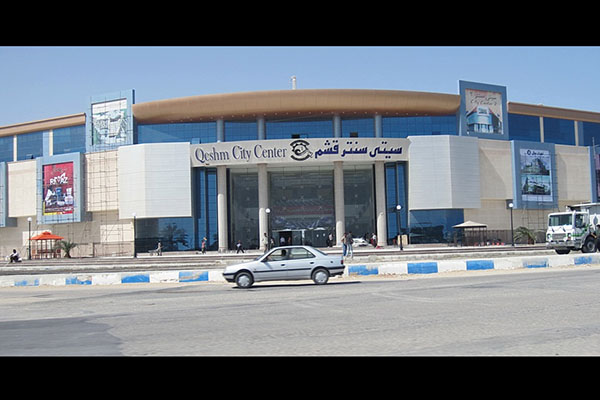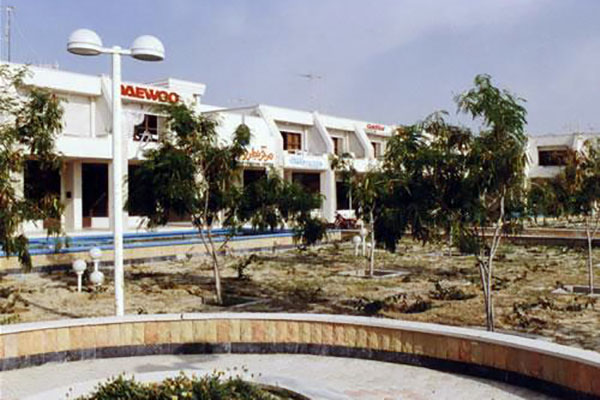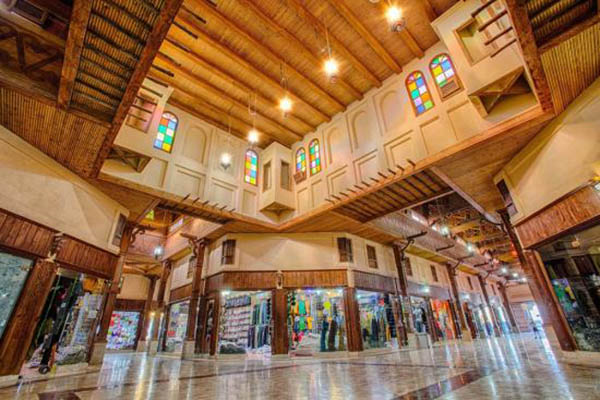Qeshm, an Iranian island with a total area of about 1,500 square kilometers, is located in the Strait of Hormuz. It is the world’s biggest dependent territory whose area is larger than the total space of the world’s 22 smallest countries. The island, which comprises 65 hamlets and three towns, is also the biggest island in the Persian Gulf home to more than 100,000 people.
Thanks to its strategic position, Qeshm Island has always had a unique place throughout history from the Elamites period to the present time. As a result, the island benefits from multiple upsides, among them access to high seas, domestic and Central Asian markets and the southern part of the Persian Gulf. Qeshm Island also has abundant skilled workforce. Besides, there are huge energy reserves in the island, including gas, deep coastline waters ideal for building wharfs to allow high tonnage vessels to dock; and intact coral reefs, especially in Naz, Hengam and Larak islands which are adjacent to Qeshm.
Take a look at some photos of Qeshm Island before reading about its main tourist attractions:
Qeshm Island’s Global Geopark
Qeshm Global Geopark with a total area of over 30,000 hectares is situated in the west of the Island. It was the Middle East’s first Geopark which made it to the Global Geoparks Network (GGN) supported by United Nations Educational, Scientific and Cultural Organization (UNESCO) in 2006. It was then removed from the UNESCO list in 2012, due to mismanagement of Qeshm Free Zone [Organization] and consequent failure to meet the required criteria for remaining on the list.
Qeshm Island Geopark has become a UNESCO Global Geopark in 2017 after obtaining the UN cultural body’s green card.
This Geopark spans several areas including Hara Forests, Salt Dome, Salt Cave, mineral springs, Chahku Strait, Tang-e Ali Strait, Bam-e Qeshm, Tandis-ha valley, Kalat Koshtar, and tens of rock and reef formations.
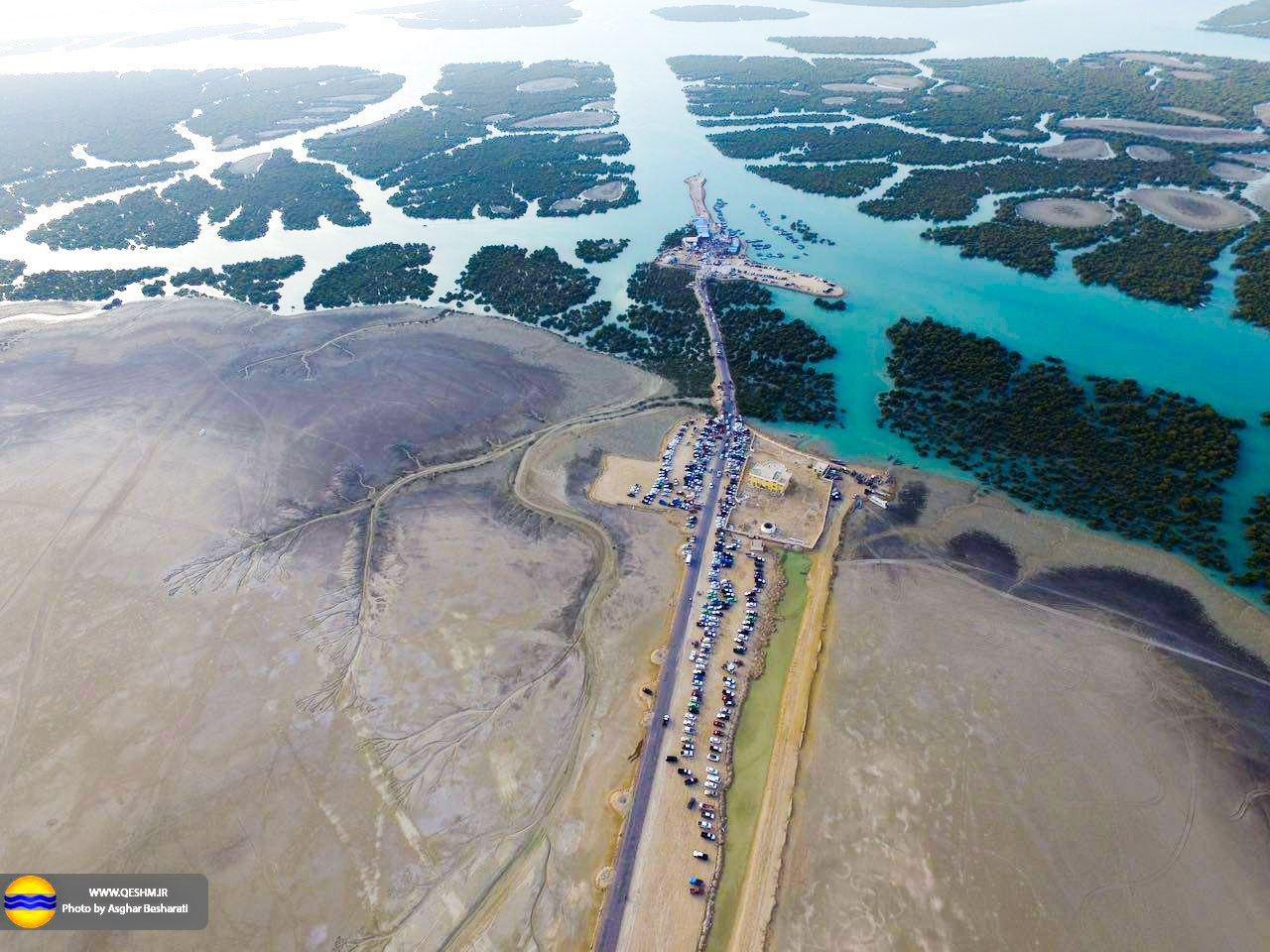
Hara Forests of Qeshm Island
The Hara Forests is the common name for mangrove forests on Qeshm Island. Dominated by the species Avicennia marina, which is locally known as Hara, the forests are an important ecological resource.
The Hara tree, a salt-water plant that is often submerged at high tide, grows to heights of three to eight meters and has bright green leaves and twigs.
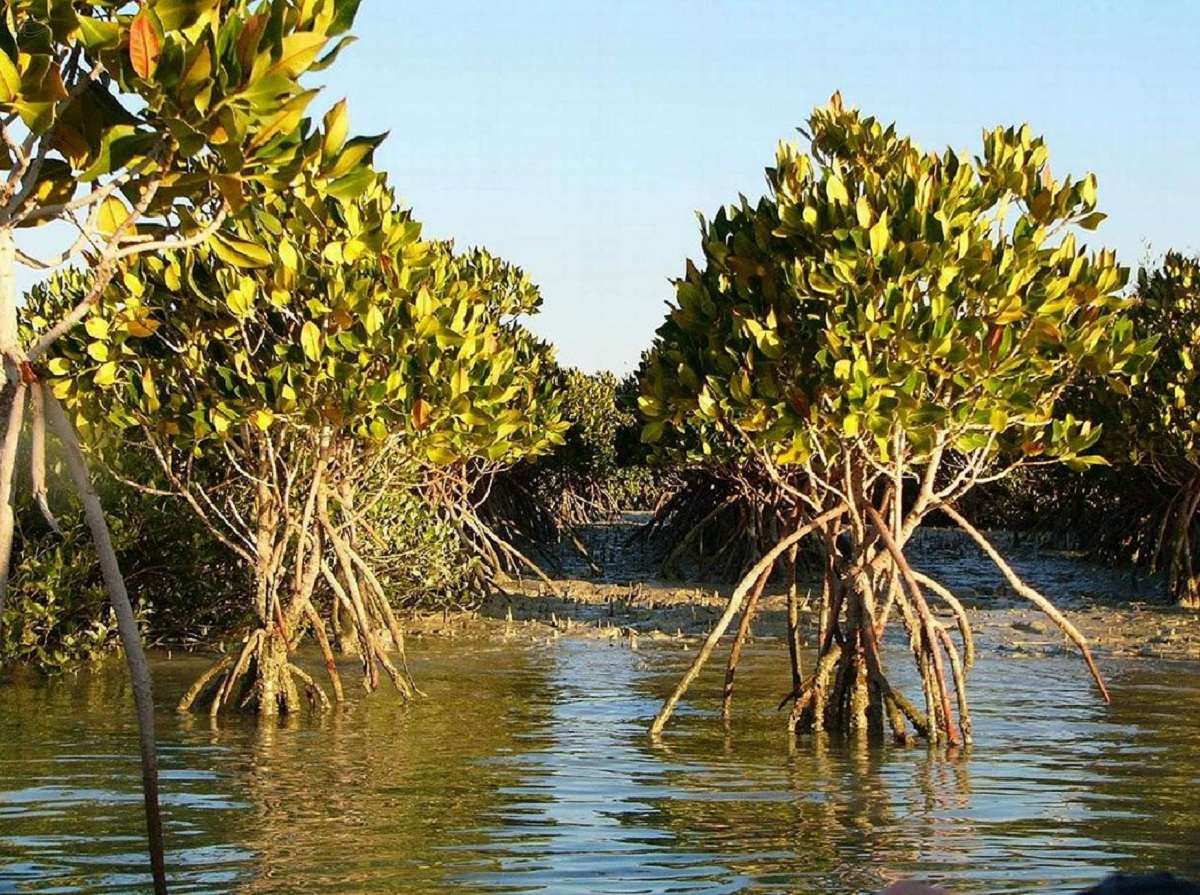
Valley of Stars
The Valley of Stars is not simply a location; it is a rare geological phenomenon. Located to the north of Berkeh-ye Khalaf village, the Valley of Stars is five km away from the southern edge of Qeshm Island in the Persian Gulf.
The beautiful place is there thanks to soil erosion triggered by surface water, torrential rain and high gusts in Qeshm Island.
Locals believe the valley has been named after the falling of a star centuries ago.
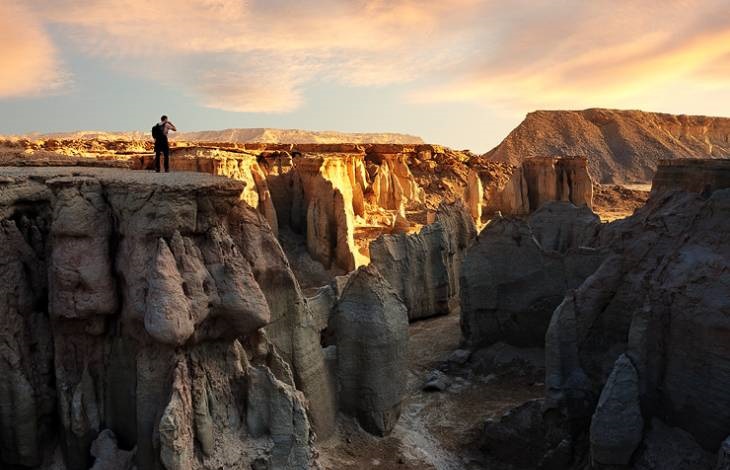
Kharbas Caves of Qeshm Island
The historic Kharbas Caves of Qeshm Island in the Persian Gulf are one of the outstanding works of rock-cut architecture. There are indications – including multiple historical structures surrounding the caves and rock catacombs [man-made subterranean passageways for religious practice] which are scattered all across the island – that the caves date back to the Parthian and Sassanid periods.
Some experts say the caves were formed naturally more than 2,800 years ago due to receding water levels.
Many historians argue that Kharbas Caves in Hormozgan province- including Qeshm Island- have been a temple or a worshiping place for the followers of Mithraism or Anahita, the goddess of water and seas.
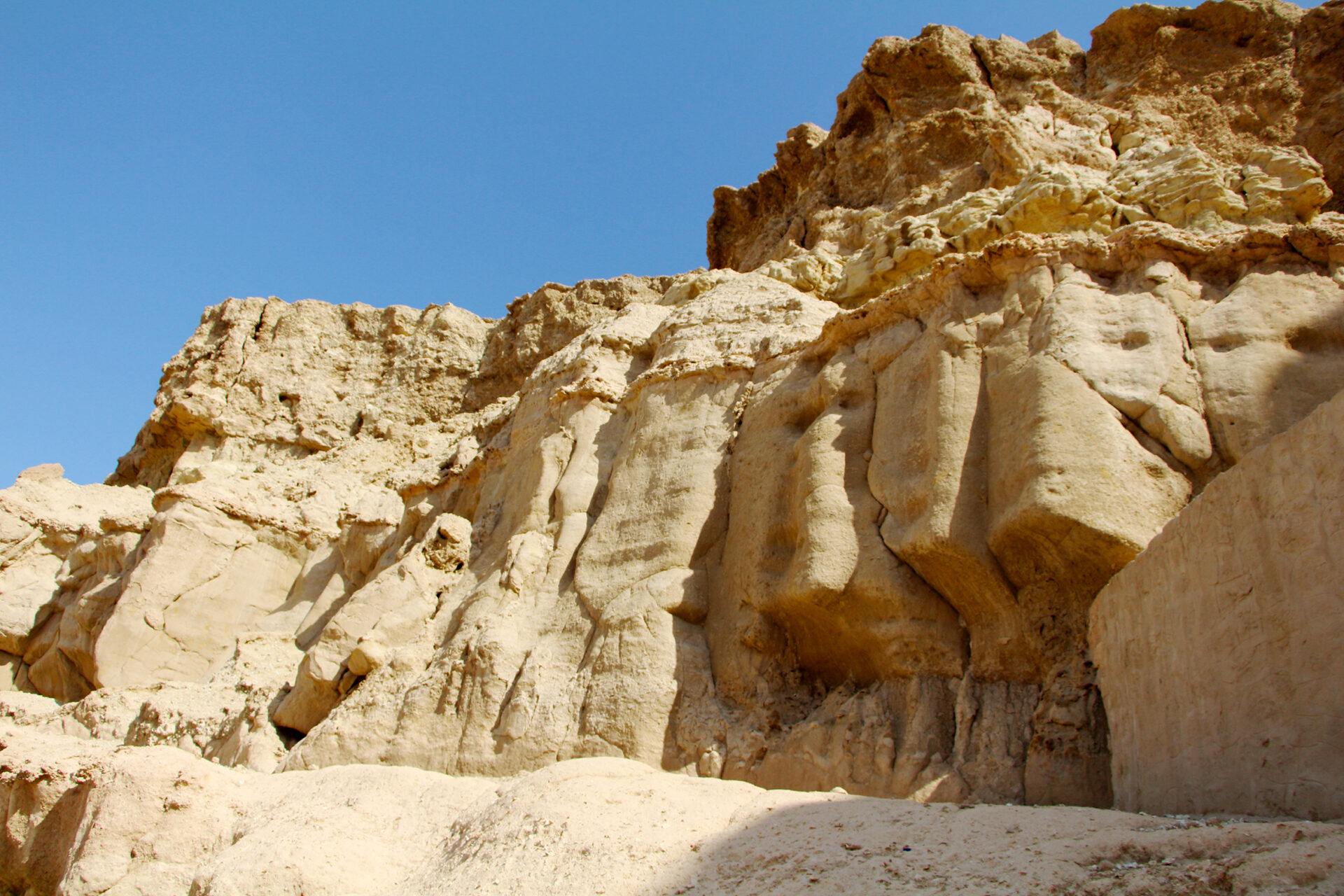
Namakdan Cave; Salty Attraction of Persian Gulf
In the southwest of Qeshm island there is a dome-like mountain, 237 meters above sea level. It has salt caves- called Namakdan Caves– which are among the island’s most beautiful natural attractions. Strands of salt on the mountain create a beautiful scene from afar.
Marble, crystal icicles in different forms have blanketed the ceiling of Qeshm salt caves.
The salt in these caves is among the best common salt which is also rich in magnesium; that’s why it can be used for medical purposes, especially by professional athletes who take it in the form of capsules.
Studies conducted by geologists at Shiraz University and in the Czech Republic have revealed that Qeshm island’s salt cave is the world’s longest (6,400 meters long). So far more than 6,000 meters of the caves have been explored.
Salt caves in Qeshm Island are inside the salt dome which is one of the most elevated parts of the island. At the cave’s entrance you can see a stream of salt water running on the ground serving as a mirror, reflecting everything. Salt crystals are spread on the ground inside the cave. You will find no similar parts in the cave. Take a look at different parts and all you see are new forms and colors.
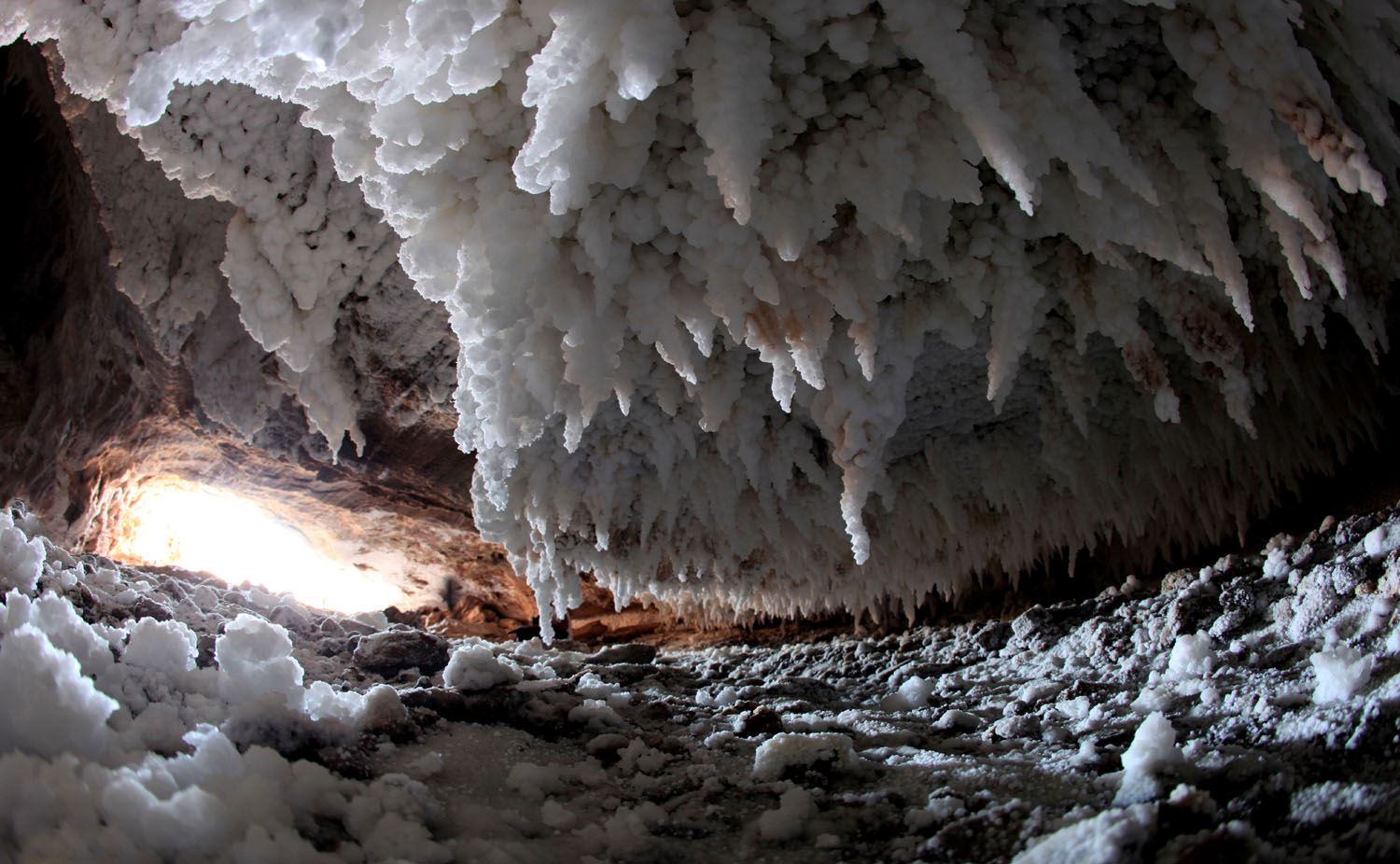
Naz Island, one of Qeshm’s Seven Wonders
Some 22 km from Qeshm, you reach Naz Island, the only place you can wade on foot or by car one km into the Persian Gulf waters. It is one of the key tourist attractions of Qeshm Island.
Naz Island which is around three hectares in area does not have a sandy beach and is surrounded by rocky walls which are five to ten meters in height. The island’s surface is completely flat. When the tide ebbs or the water flows outward from the land, a strip of land temporarily connects the island to Qeshm’s coasts.
This island is one of the areas favored by tourists visiting Qeshm Island.
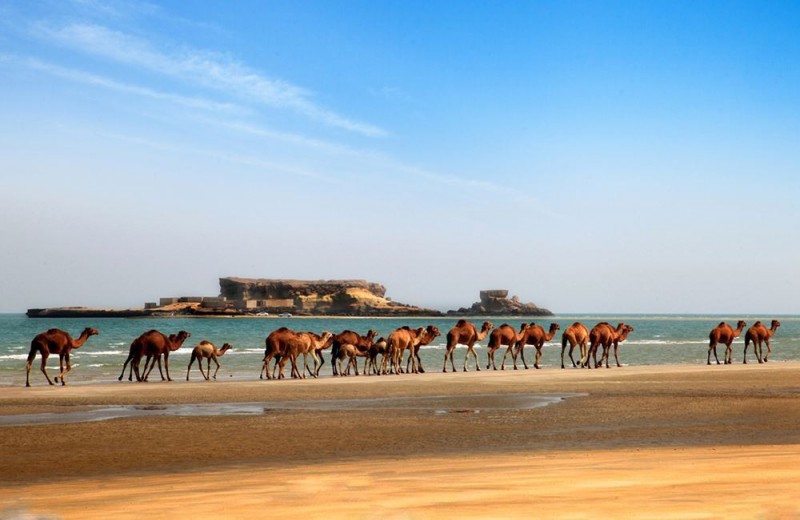
Aali Mohammad Valley; Abnama or Sangab Valley
Another geological phenomenon – Aali Mohammad Valley – is located near Chahkuh Valley in Qeshm Island. More attractive than Chahkuh thanks to its beautiful scenes, Aali Mohammad Valley has also created on its walls. Water that is easily seen in some parts of valley added to its beauty.
Aali Mohammad Valley which is located in the western part of Qeshm Island and to the south of the Chahu-ye Sharqi spans along a north-south line. The valley’s northern opening is wide and vast, however it sharply narrows after a few meters.
The middle part of the valley becomes drastically narrow and almost impassable. In fact there are places where the walls get so close to each other that visitors need to lift themselves up to pass through. The height of surrounding walls together with the narrow and dark path creates an eerie condition for some visitors, while it excite others.
At its end, Aali Mohammad Valley leads to the northeastern walls of Salt Dome [of the Salt Cave]. From this point to the southern coast of Qeshm Island, the path is completely different, and features of the outer part of the salt dome can be seen.

Naderi Castle
This castle, which is in Laft – an old village on Qeshm Island – beside Tala Wells, is known as Naderi or Nader Shahi (King Nader) Castle. But its construction predates Nader Shah. It is believed to have been built on the foundations of the ancient pre-Islamic fortresses. Ebrahim Kazerouni who visited the castle in Laft during the reign of Mohammad Shah, a Qajar king, has said that the castle dates to the Safavid era.
Naderi Castle of Qeshm – which has been built of stones and mortar – has one rampart, four towers and one gate which is located on its western side. Its architecture resembles that of Portuguese castles. The castle is now at the heart of the city surrounded by houses.
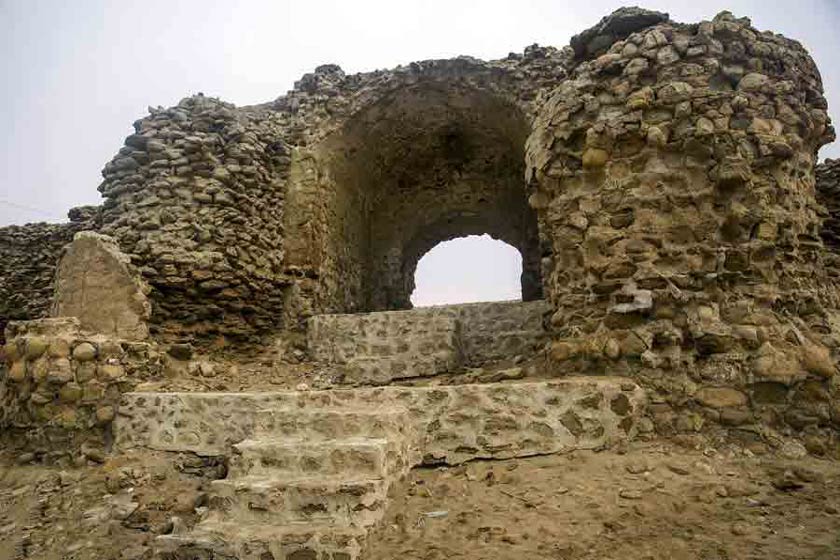
Qeshm Island’s Tala Water Wells
Tala Water Wells are located next to Naderi Castle in Laft. The hardworking people in the region dug them through Schist rocks which had covered the ground. Since a plaster layer lies at the bottom of the wells, water stays there healthy and cold for a long time.
The number of these wells is said to stand at 366, equal to the number of days in a leap year; each day people of Qeshm Island used the water of one well.
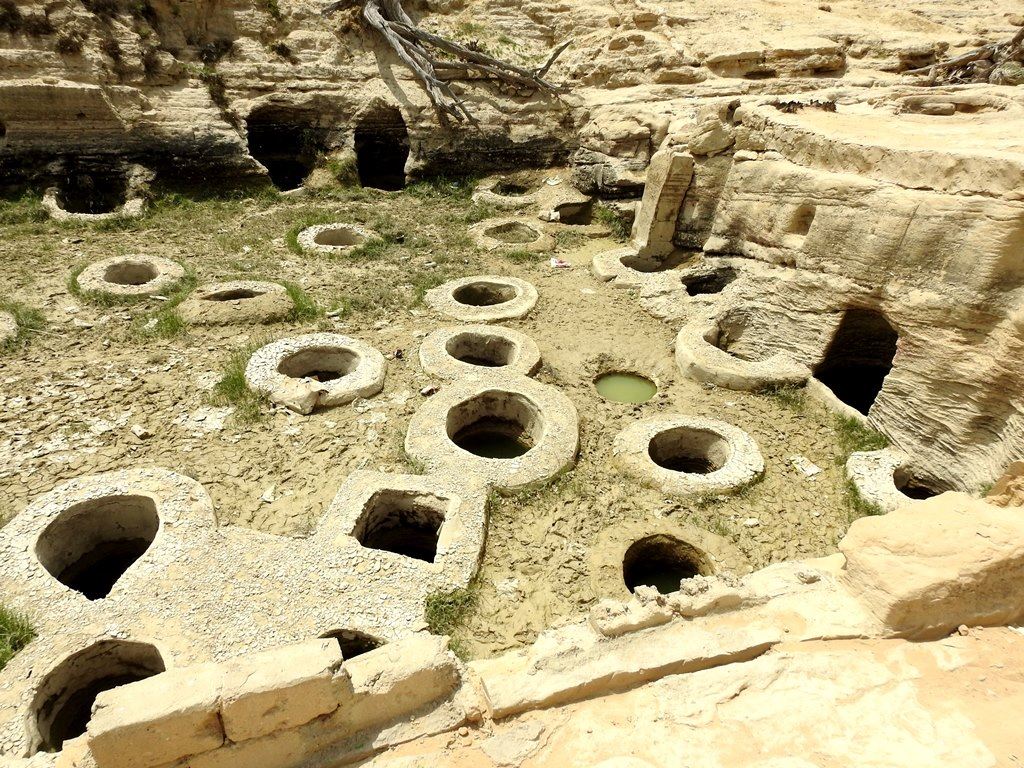
Kaseh Salakh
Kaseh Salakh or Salakh Bowl is a featureless area, seven kilometers in length and about five kilometers in width, on the southern coast of Qeshm Island. It has no flora or vegetation; there are no traces of life in it.
Thousands of small and big dome-like hillsides and erosional patterns are seen in Qeshm, those which have bubbled from under the ground, dried there and formed wide, interconnected foothills.
Deep at the heart of this wilderness, a healing spring of sulfur water is bubbling up from the ground. All these factors suggest that huge oil and gas reserves are in the underground layers of the area.
This area on Qeshm Island has fewer visitors than other parts, but its wonderful attractiveness can cause man to plunge into deep thought. It can also serve as a haven for those seeking calm and serenity. The fluttering of the island’s big eagle in the blue sky is the only sound which punctuates the silence there.

Bibi Ab-Anbar of Qeshm Island
Ab-Anbar means cistern in Persian. The Bibi Ab-Anbar -Cistern- was built on Qeshm Island more than two centuries ago. The historical site, which is a lake-based cistern, is located in Shahab District and is one of the sightseeing sites of Hormozgan Province.
The Bibi Cistern is the first lake-based cistern which was built by Soghiyeh, a female benefactor and the wife of Sheikh Abdollah, a one-time ruler of Qeshm island.
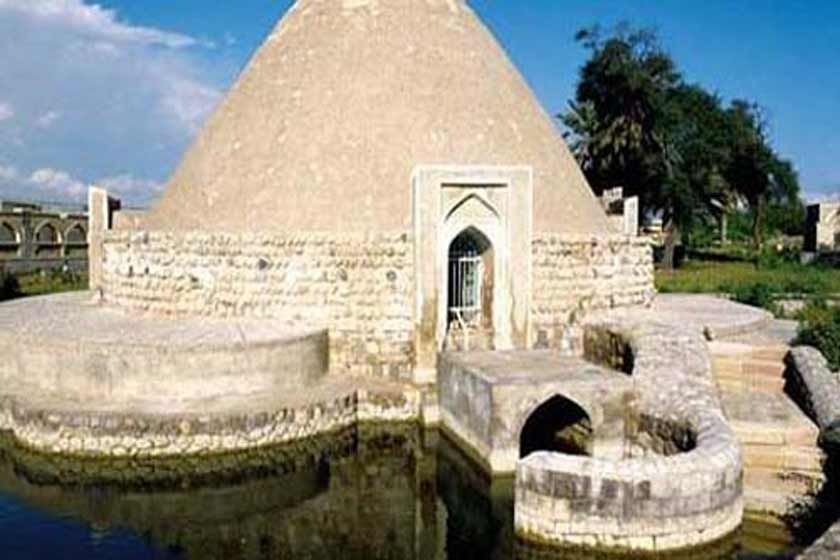
Tourian Village
Tourian is a village about 31 km to the southwest of Qeshm. Agriculture is booming in this village. Vegetable cultivation, sunflower farms and beautiful palm groves are among the tourist attractions of this region.
At the time of Mongol invasion when anarchy was the order of the day in Iran, any tribe which could escape unharmed and survive the Mongol plunder would leave for a safe place.
A tribe headed by Touran settled in Qeshm Island. The tribal chief built a court, a mosque and a bathroom on the island and proclaimed himself the king. Later he was known as Touran Shah (King Touran).
History has it that two Touran Shahs were in this region: one on Hormuz Island and the other on Qeshm. Ibn Battuta writes in his travelogue: Touran, the king of this island, took up residence six farsangs from Qeshm. He is widely known as Mokhles or Tourian.
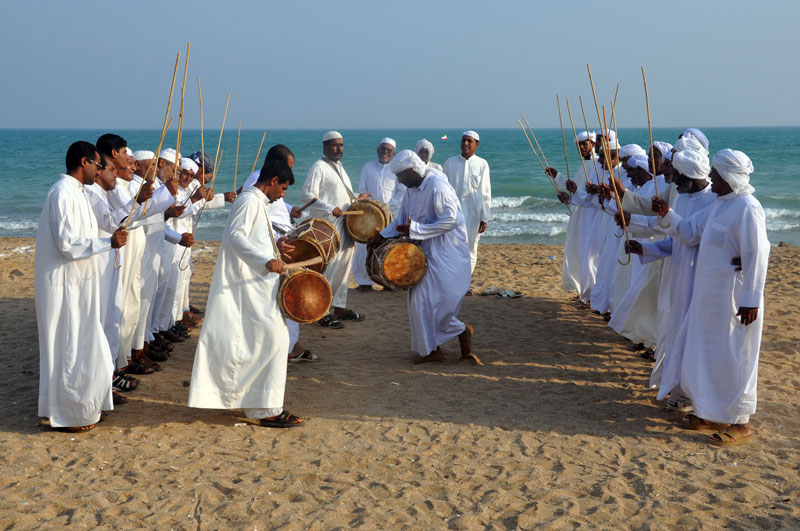
Bogh-e Pir in Tomsenati Village
Bogh-e Pir or Pir shrine, is located in the Tomsenati village close to the Tourian region of Qeshm Island. The shrine’s half-ruined building is still beautiful and lovely.
Beautiful semi-circular mortar plasterworks are seen around the neck of the dome. A short, narrow and small door forms the entrance of the shrine, with the Pir Shrine lying below the ground surface. This shows that the building was likely to be the temple of Mithraism and the place of worship for the god of Mehr or Mithra in Qeshm, prior to the Seljuq dynasty and before Pir was buried there. (Future excavations are likely to prove this.)
Tomsenati is in fact the name the Spaniards have used for Bogh-e Pir of Qeshm Island; it is perhaps a variation of Tomb Saint.
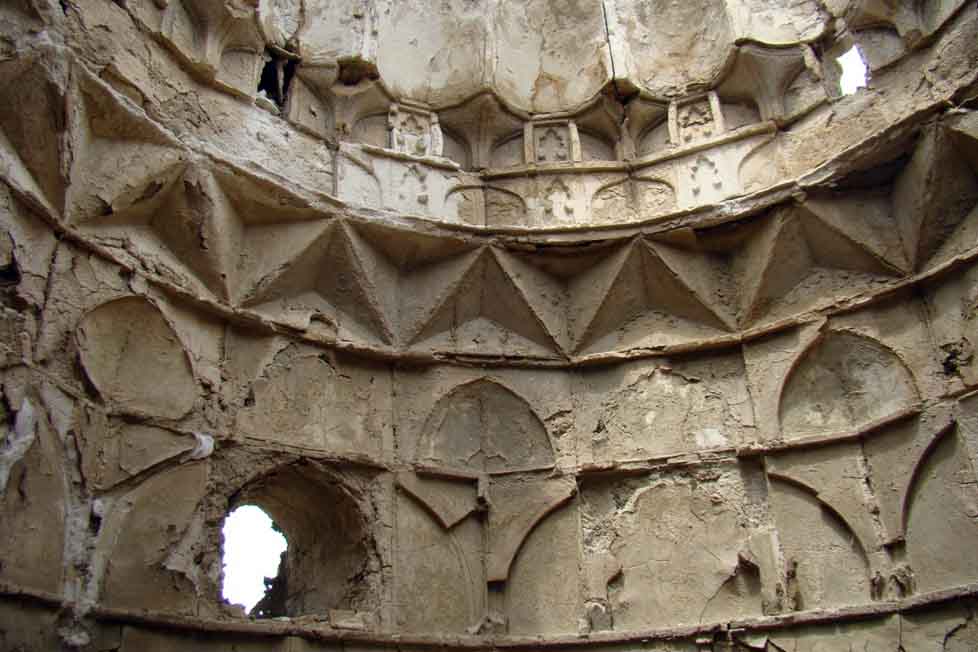
British Cemetery of Qeshm Island
The cemetery, which is situated 135 km away from Qeshm in the Basaedo Port, used to accommodate a group of Britons in the Fath-Ali Shah period. The tombs of a number of British government officials, lookouts and military officers who served in the British army are in this cemetery.
In the past the British cemetery of Qeshm Island used to be a small castle with a watchtower and a place for cannonballs to safeguard the castle. Among the cemetery’s attractions are old, broken gravestones, and a memorial column which is still standing. The structure of the column is in fairly good condition, but its epigraphs are broken.

Laft Village, Port of Wind-catcher
Laft is a small, beautiful village on Qeshm Island. This coastal village, which is located in the northwest of Qeshm and east of Hara Forests, was registered as a national site in 2006.
Hara Forests, traditional dhow building workshops, and Tala water wells are among the attractions of Laft Village.
Green tropical trees and long palms as well as different kinds of wind-catchers in different sizes have given special beauty to this village of Qeshm. Thanks to its architectural attractions, the village is one of the country’s top ten villages.
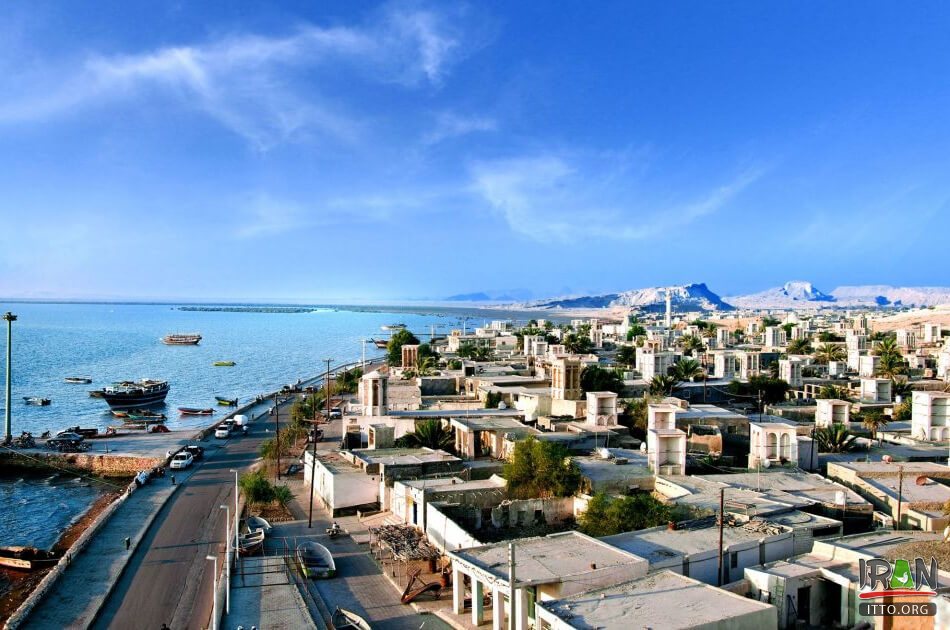
Qeshm Island’s Geo-park Museum
Qeshm island’s Geo-Park Museum is one of the most complete wildlife museums in Iran as far as biodiversity is concerned. In an area of over 1,000 square meters, the museum is home to more than 3,000 animal species.
The museum was established in 1995 by the Qeshm Free Zone Organization. That the museum has more than 95 percent of indigenous species in it is its standout feature.
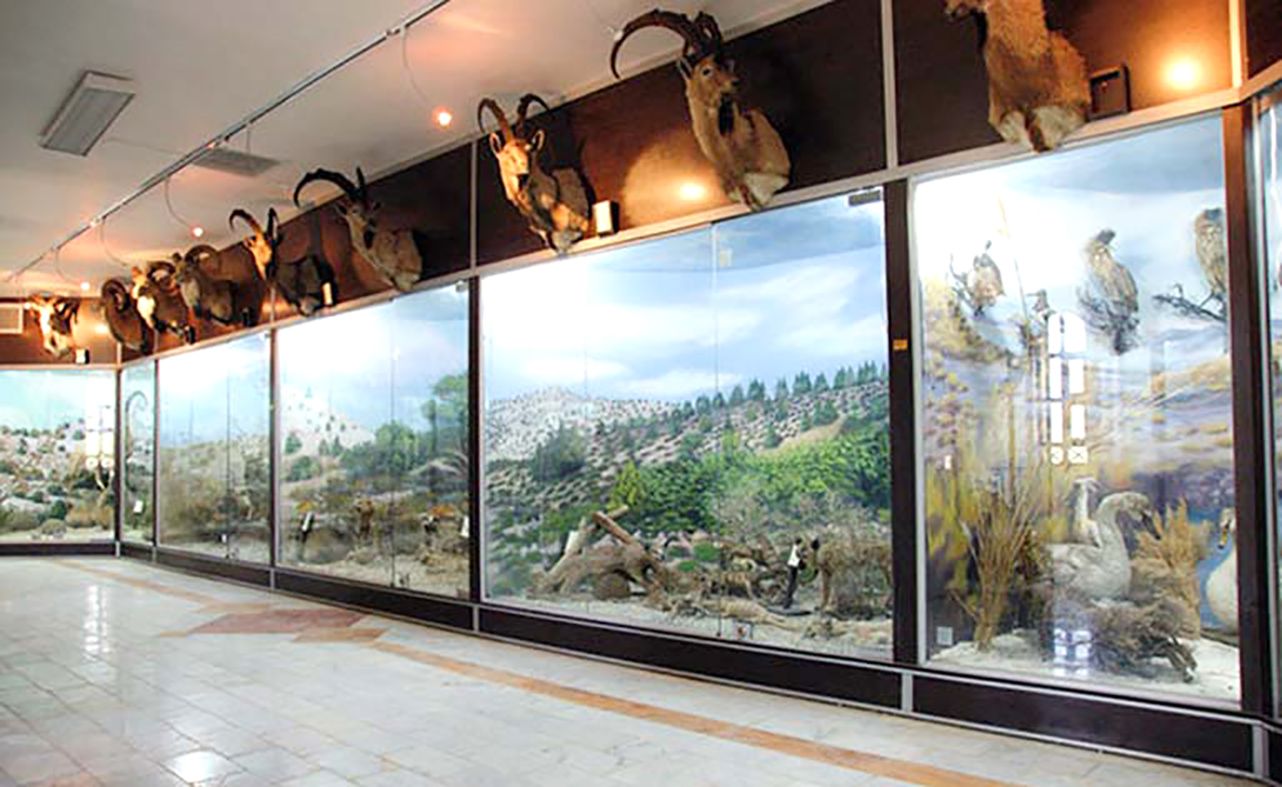
Frequently Asked Questions about Qeshm
The top attractions to visit in Qeshm are:
- Qeshm Island’s Global Geopark
- Mangrove “Hara” Forests of Qeshm
- Valley of Stars
- Namakdan Salt Cave
- Naz Island
- Aali Mohammad Valley
- Qeshm Island’s Tala Water Wells
- Tourian Village
- Bogh-e Pir in Tomsenati Village
- Laft Village
- Qeshm Island’s Geo-park Museum
See all attractions in Qeshm on Iran Front Page[/vc_toggle][vc_toggle title=”What are the most popular things to do in Qeshm Island with kids?” style=”arrow” color=”black”]
The most popular things to do in Qeshm with kids are:
- Qeshm Island’s Global Geopark
- Mangrove “Hara” Forests of Qeshm
- Naz Island
- British Cemetery of Qeshm Island
- Qeshm Island’s Geo-park Museum
See all kid friendly things to do in Qeshm on Iran Front Page[/vc_toggle][vc_toggle title=”What are the best outdoor activities in Qeshm Island?” style=”arrow” color=”black”]
The best outdoor activities in Qeshm are:
- Valley of Stars
- Naz Island
- Namakdan Salt Cave
- Aali Mohammad Valley
- Tourian Village
- Bogh-e Pir in Tomsenati Village
- British Cemetery of Qeshm Island
See all outdoor activities in Qeshm on Iran Front Page[/vc_toggle]
